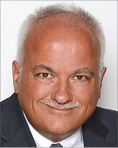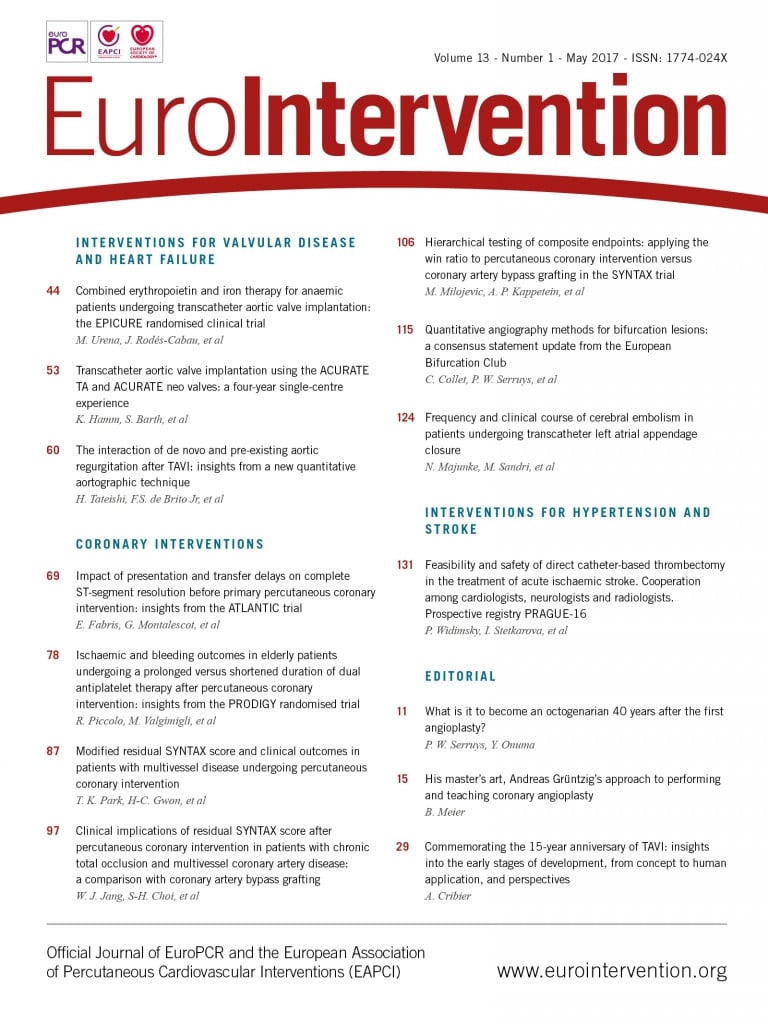
As we all know by now, this edition of EuroIntervention marks the anniversary of the first balloon angioplasty by Andreas Grüntzig ... a moment certainly of reflection and nostalgia, but one that can also serve to remind us of the role of individual insight, perseverance and clinical experience that helps advance our specialty. As we read the personal histories in the editorials of this edition, we learn how interventional cardiology evolved and, what is equally important, how we can use this experience in the way we approach our current practice.
It is only by truly understanding the past that we can use it as a foundation for building the future. It is for this reason that, for the EAPCI Focus and News page that traditionally follows my column, we asked one of the editorial writers, Bernie Meier, if an Andreas Grüntzig could exist today. His personal experience and insights are valuable, especially since our goal is not simply to remember this remarkable physician, but also to approach Andreas Grüntzig’s legacy in a such a way as to acknowledge that our practice is in constant evolution, and that the contributions of those who came before us are part of a vital continuum of which we, as specialists today, are active players.
In this spirit, we would like to recommend the “40 Years of Angioplasty” Expo that has been developed for this historic occasion during EuroPCR 2017, and which will be travelling to other PCR meetings as well as being, in part, consultable online. Entering the Expo will allow the participant to follow the history of our subspecialty from the earliest stages of its development through to the pioneering work of Andreas Grüntzig and beyond. It is, in part, an inspiration and interaction between the governing board of EuroPCR and young interventionalists eager to explore further the origins and future developments of interventional cardiology. Designed to be accessible, it will offer a ludic, interactive and educational approach to these critical developments in our specialty. As you walk through this history, you will be able to take special note, not only of the different success stories, but also of the trials and errors that are part of the evolution of any clinical practice.
Forty years ago, Andreas Grüntzig faced a disbelieving medical public and, though surrounded by admirative followers, he was essentially alone in the early days of his clinical explorations. Today, we can count as one of the legacies of his work the creation of such organisations as our European Association of Percutaneous Cardiovascular Interventions. The EAPCI was founded as a professional association, not only to explore the nature of interventional cardiology further, but also to provide a framework for younger interventionalists and to represent those aspects of our specialty that need attention – from fellowships to fellows courses, from scientific publications to national registries, and from this journal itself to meetings such as EuroPCR – not to mention our increasing participation in our parent organisation, the European Society of Cardiology.
We can truly say without hesitation that today’s interventional cardiologist is not alone. The challenges are still present, but the structures exist to support us – if we participate, if we innovate and practise with the same level of rigour and clinical intelligence as those who came before us.
Our association owes a tremendous debt of gratitude to the pioneers of interventional cardiology whose insights and clinical courage allowed our specialty to come into existence. Decades later, we remain committed, not only to the continued evolution of our specialty, but also to the exchange of knowledge and experience that further supports our work and provides the best possible care for all our patients, today and in the future.

